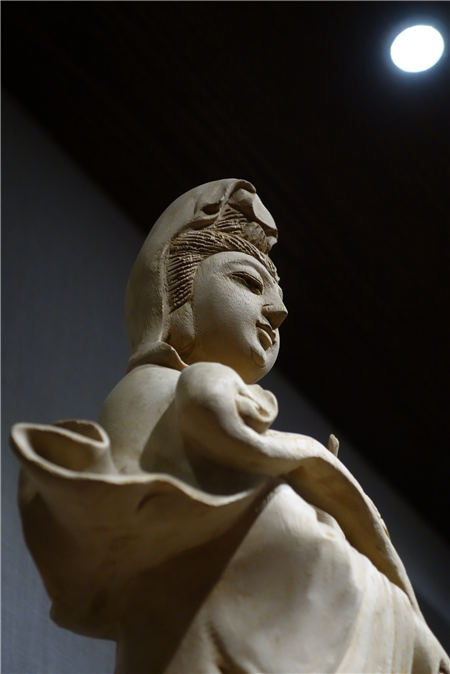A rare aloeswood museum in Beijing
Updated: 2015-12-01 08:06
By Liu Xiangrui(China Daily)
|
|||||||||||
 |
|
Photo provided to China Daily |
Among them The Lobster and the Crab-Trapping Baskets seems to draw the most attention. The work not only vividly depicts the crabs and a lobster crawling between two bamboo baskets, but also skilfully shows the crabs trapped in the baskets.
Because of the special texture, carving on aloeswood is more complex than on other materials, such as bamboo or horns, Chen says.
Shen, who used to be a property developer, took a fancy to aloeswood when he was young. A sharp eye for quality pieces have helped him gain a deeper understanding of the trees and expand his collection.
China's wild aloeswood trees have almost been wiped out, and they have been listed as "secondary-level protected plants" since the 1990s, Shen says.
Now a director of the professional committee of the aloeswood industry under the China Marketing Association, Shen has involved himself in the promotion of the carving culture and the protecting of such trees.
Besides promoting related knowledge and culture at his museum, Shen hopes that it can help people distinguish authentic aloeswood from fake pieces in the market.
Shen has also established a cultivation and protection base of wild aloeswood in Shenzhen, in South China's Guangdong province.
He has transplanted more than 400 saplings from Southeast Asia to the 13-hectare base in Shenzhen.
liuxiangrui@chinadaily.com.cn
If you go
10 am-5 pm, daily. 3 North Guorui Road, Dongcheng district, Beijing. 010-8719-6887.
Related Stories
Largest Chinese painting exhibited in Beijing 2015-11-27 15:08
Taipei Palace Museum calls on Taobao to boycott copycat gadgets 2015-11-27 08:44
World's oldest family letters on display at Hubei museum 2015-11-26 11:28
British Museum puts exhibits online with Google Street View, including Admonitions Scroll 2015-11-25 14:04
Shrouded in heavy snowfall, Palace Museum greets a good many visitors 2015-11-23 11:07
Today's Top News
Xi says climate summit a 'starting point'
Xi warns against mentality of zero-sum game
What world leaders say about the planet's future
Xi meets Obama ahead of climate conference
EU, Turkey sign deal to stem migrant flows
Ankara prepares to hand over Russian pilot's body
Beijing to adopt world's strictest emissions standard
Erdogan-Putin meeting possible: Turkish presidency
Hot Topics
Lunar probe , China growth forecasts, Emission rules get tougher, China seen through 'colored lens', International board,
Editor's Picks

|

|

|

|

|

|






